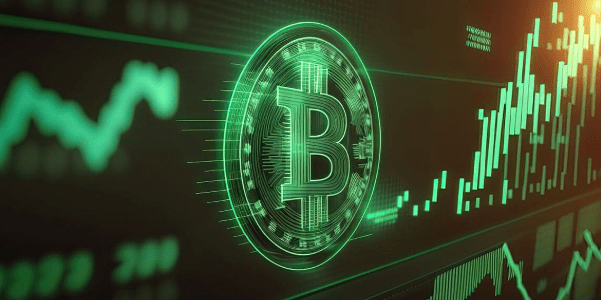The first half of 2025 was a period of modest growth and high volatility for cryptocurrency markets, despite substantial growth in 2024. The total market capitalization increased by 1.99% year-to-date, with a decline of 18.61% in the first quarter and a recovery of 25.32% in the second quarter.

Bitcoin behaved as a high-beta asset, not a safe haven, but achieved an impressive +13% in the first half of 2025. This demonstrates its maturity as an institutional macro asset, with over $2 trillion in capitalization and a 65.1% dominance. BTC ETFs boosted institutional investment and corporate adoption grew (848.1K BTC in >140 companies) thanks to regulatory clarity. The Bitcoin model evolved with improvements in scalability and strong growth in TVL in Bitcoin DeFi (BTCFi).
so it is a good time to invest and trade in $BTC

Performance of Layer 1 (L1) and Layer 2 (L2) Protocols
L1s: Ethereum maintained its dominance due to institutional inflows and upgrades. Solana improved its performance and reliability. BNB Chain experienced record activity in DEX and expanded to memecoins and real-world assets (RWAs) $BNB
L2s: Faced signs of saturation and increased competition, especially in the 'blob fee arms race'. Optimistic rollups (Base and Arbitrum) led in liquidity and users, while ZK rollups advanced technically but lagged in TVL. Fragmentation and mixed progress in decentralizing sequencers remain challenges for their long-term maturity.
DeFi and Stablecoins
The DeFi sector matured and showed resilience, moving from speculation to institutional adoption. The TVL stabilized at $151.5 billion, but monthly active users increased by 240% year-on-year. Restaking, led by EigenLayer, became a cornerstone of the ecosystem.
Stablecoins experienced significant growth, surpassing $250 billion in total market capitalization. Tether (USDT) maintained its leadership, and Circle's USDC was the fastest-growing. Regulatory clarity, with the approval of the GENIUS Act in the U.S. and the MiCA rules in the EU, boosted institutional confidence and positioned stablecoins as conventional financial tools.
Innovation and Consumer Adoption
The first half of 2025 highlighted a bifurcation in the trajectory of cryptocurrencies: acceleration of institutional adoption alongside innovation at the consumer layer. Wallets evolved into 'super applications', DeFi merged with traditional neobanking, and casual games and memecoins captured mainstream attention. The convergence of decentralized technologies with AI and real-world infrastructure (DePIN, DeFAI, DePAI, DeSci) is driving a new wave of innovation.
Global Regulatory Landscape
The regulatory landscape underwent notable changes: crypto-friendly moves in the U.S. under Donald Trump's presidency, stricter applications in Europe, and a contrasting environment in Asia (Hong Kong fostering innovation and Singapore with strict measures). There were advances in standardizing tax transparency and cross-border regulatory cooperation.
Outlook for the Second Half of 2025
For the second half of 2025, significant advancements are anticipated in ten key themes, including the macro environment, policy and regulation, the Bitcoin ecosystem, stablecoins, and RWAs, suggesting a Bitcoin price cycle as a leading indicator of the global manufacturing cycle.